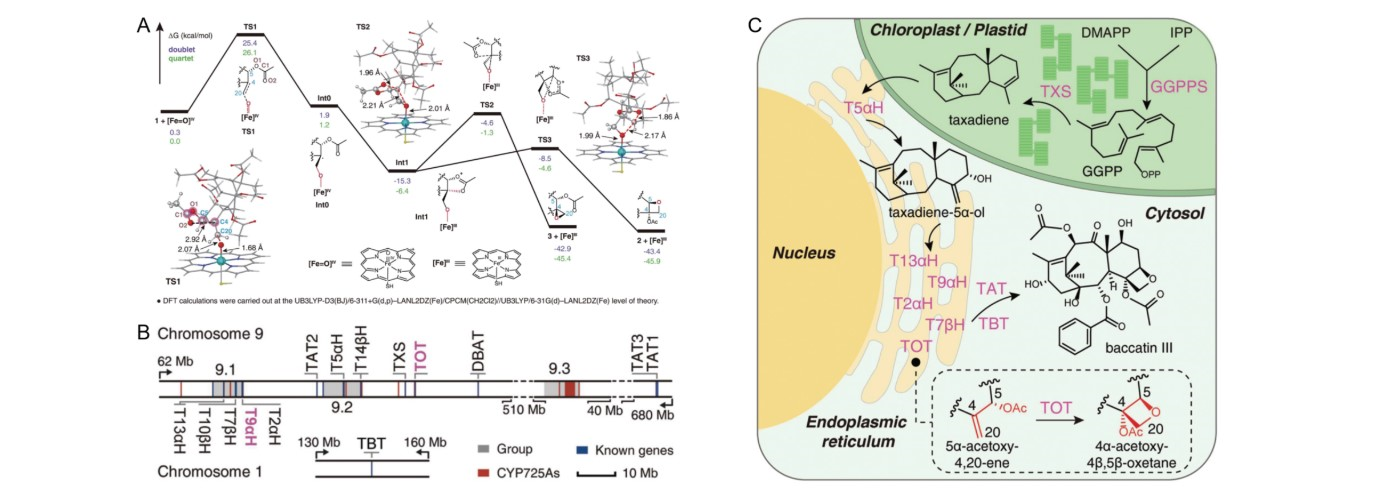SCIENCE | Chinese scientists have made significant breakthroughs in the biosynthesis of paclitaxel, the anti-cancer star drug
On 25 January, 2024, the Agricultural Genomics Institute at Shenzhen, Chinese Academy of Agricultural Sciences (Shenzhen Branch, Guangdong Laboratory for Lingnan Modern Agriculture), collaborated with various domestic and foreign institutions, successfully discovered the essential unknown enzyme involved in paclitaxel biosynthetic pathway, elucidated the new formation mechanism of the oxetane ring structure in plants, and established the shortest heterologous biosynthetic pathway for paclitaxel so far.The related research progress is published in the top international scientific journal "Science" as a long article.
Prof. Jianbin Yan, the project leader, has introduced that paclitaxel is the most well-known natural anti-cancer medication globally. It is commonly used to treat breast, ovarian, and other types of cancers. However, natural paclitaxel is scarce and comes from a single source. It is extracted from the rare and endangered gymnosperm plant Taxus genus in Taxaceae. Scientists worldwide have been seeking a biosynthetic approach to replace this natural source of paclitaxel. However, due to its complexity, the paclitaxel pathway has not been fully identified even after half a century of research.
This study utilized various technical means, including genomics, metabolomics, biochemistry, molecular biology, chemical biology, and synthetic biology, to screen many candidate genes for paclitaxel biosynthesis. The researchers successfully discovered the taxane oxetane synthase and taxane C9 oxidase and further elucidated the catalytic mechanism for forming the oxetane structure. This changed the traditional understanding that epoxide is the prerequisite for generating oxetane. Based on these findings, the researchers were able to reconstruct the synthetic route using plant chassis through artificial heterologous biosynthetic pathway construction. They successfully generated the industrial production of paclitaxel precursor baccatin III in plant chassis using nine critical biosynthetic enzymes.
Based on the breakthrough, China is now a global leader in the field of paclitaxel synthetic biology, with numerous patents filed or obtained for related research results. This achievement paves the way for the green manufacturing of paclitaxel in the future.
The research was supported by the National Key Research and Development Program and the Science and Technology Innovation Project of the Chinese Academy of Agricultural Sciences.
https://www.science.org/doi/10.1126/science.adj3484


